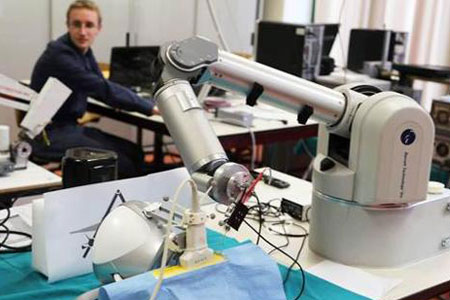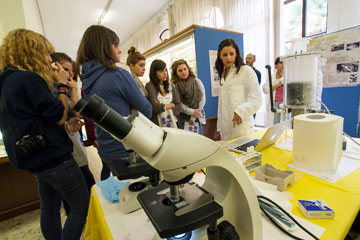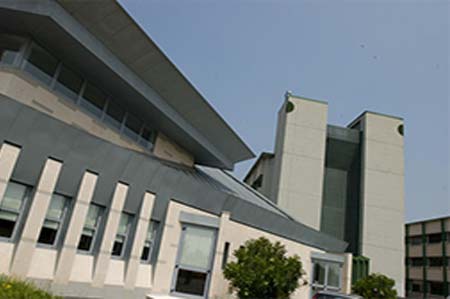Learning outcomes
Proteomics is the large-scale study of proteins. It is an emerging scientific research which can be applied for example to food (to find allergen for example) and plants research (for example to study plant pathogen response), as well as to biomedical research (clinical proteomics).
In particular, clinical proteomics is the science that aims to develop technologies for the treatment of patients through the analysis of proteomes of healthy and sick cells. This research area aimed to identify proteins that can be used as early markers in blood, urine, or tissues of cancer patients, or that may predict response to therapy or the relapse after treatment.
Syllabus
PROTEOMICS
Analytical proteomics (LM9:
1. Introduction.
2. Sample preparation.
3. Gel-based separation.
4. 2D gel Image analysis.
5. Gel-free separation.
6. Pre-fractionation of low abundance proteins.
7. Analysis of proteins/peptides by Mass Spectrometry.
8. Analysis of proteins/peptides by Tandem Mass Spectrometry.
9. Analysis of mass spectra and database search for protein identification.
10. Differential and Quantitative proteomics.
11. Characterization of post-translational modifications.
12. Proteomics in agro-food and biomedical areas.
Clinical proteomics (LM9):
13. Application of Proteomics in Cancer Research.
14. Mantle cell lymphoma: resveratrol treatment, and phosphoproteomic analysis.
15. Pancreatic cancer: phosphoproteomic profiling of cells treated with CB1 or CB2 agonists; and shotgun analysis of stem cells.
16. From iron-diseases to hypertension: application of clinical proteomics.
17. Macrophages and iron metabolism, splenic lymphoma SMZL
18. Intrauterine Growth Retardation and Cardiovascular Diseases.
19. Autoimmune disease.
20. Bacterial and viral infections.
Laboratory (1 CFU)
Day 1:
Rehydration of 7 cm IPG with protein extract
Preparation of buffers and solutions for 2-DE analysis
Polymerization of 12% T gel
Isoelectrofocusing by using PROTEAN® IEF Cell (Bio-Rad)
Day 2:
IPG strip equilibration
Interfacing with the second dimension
Second dimension by Mini-PROTEAN® 3 Dodeca™ Cell (Bio-Rad)
Staining of 2-DE maps with Coomassie and/or SyproRuby
Day 3:
Destaining and acquisition of images by VersaDoc™ MP 1000 system (Bio-Rad)
Image analysis by PDQuest software (Bio-Rad) (classroom gamma)
Analysis of mass spectra and database searching with Mascot








